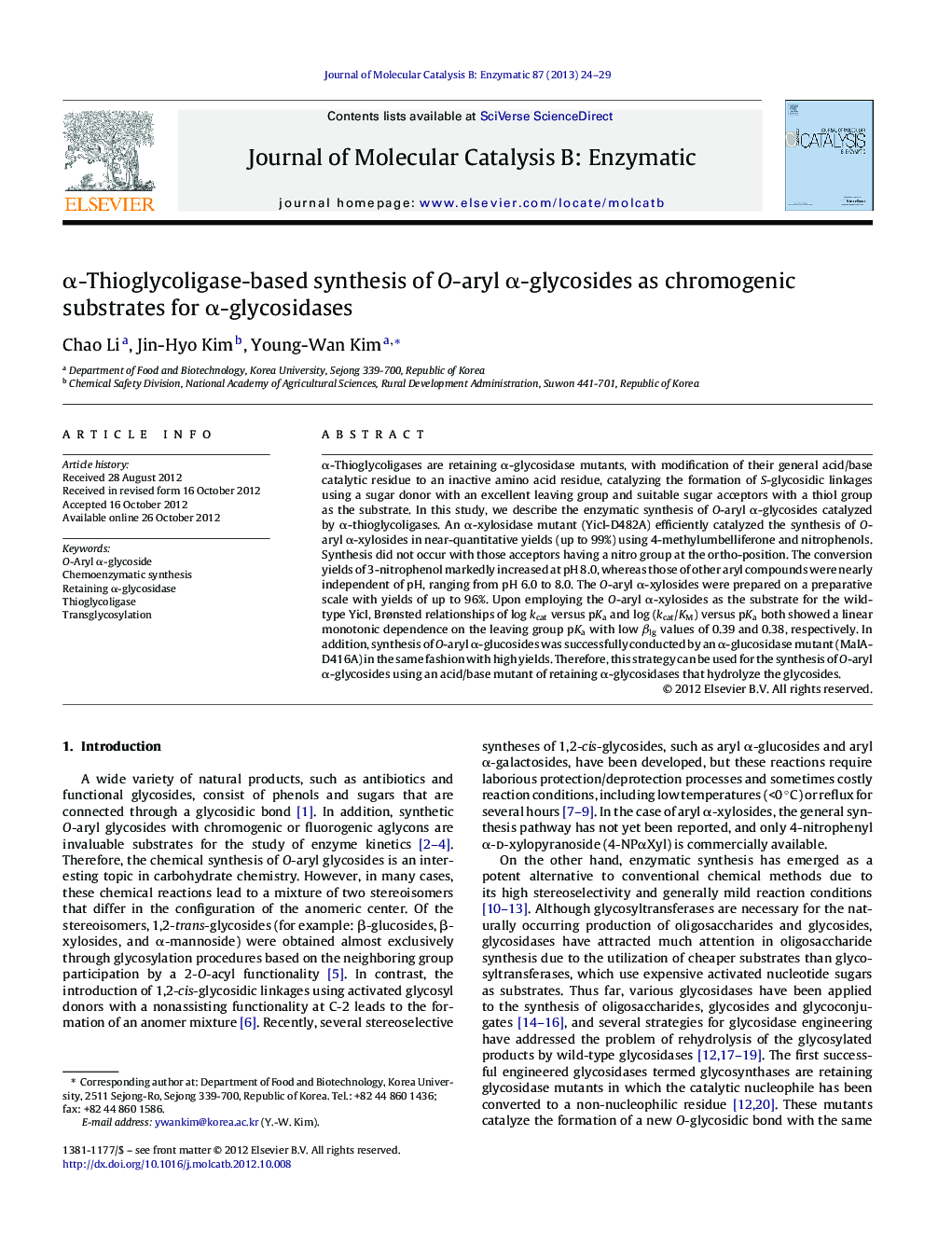| Article ID | Journal | Published Year | Pages | File Type |
|---|---|---|---|---|
| 70148 | Journal of Molecular Catalysis B: Enzymatic | 2013 | 6 Pages |
α-Thioglycoligases are retaining α-glycosidase mutants, with modification of their general acid/base catalytic residue to an inactive amino acid residue, catalyzing the formation of S-glycosidic linkages using a sugar donor with an excellent leaving group and suitable sugar acceptors with a thiol group as the substrate. In this study, we describe the enzymatic synthesis of O-aryl α-glycosides catalyzed by α-thioglycoligases. An α-xylosidase mutant (YicI-D482A) efficiently catalyzed the synthesis of O-aryl α-xylosides in near-quantitative yields (up to 99%) using 4-methylumbelliferone and nitrophenols. Synthesis did not occur with those acceptors having a nitro group at the ortho-position. The conversion yields of 3-nitrophenol markedly increased at pH 8.0, whereas those of other aryl compounds were nearly independent of pH, ranging from pH 6.0 to 8.0. The O-aryl α-xylosides were prepared on a preparative scale with yields of up to 96%. Upon employing the O-aryl α-xylosides as the substrate for the wild-type YicI, Brønsted relationships of log kcat versus pKa and log (kcat/KM) versus pKa both showed a linear monotonic dependence on the leaving group pKa with low βlg values of 0.39 and 0.38, respectively. In addition, synthesis of O-aryl α-glucosides was successfully conducted by an α-glucosidase mutant (MalA-D416A) in the same fashion with high yields. Therefore, this strategy can be used for the synthesis of O-aryl α-glycosides using an acid/base mutant of retaining α-glycosidases that hydrolyze the glycosides.
Graphical abstractFigure optionsDownload full-size imageDownload as PowerPoint slideHighlights► α-Thioglycoligases are retaining α-glycosidase mutants at their acid/base catalyst. ► Glycosylation of O-aryl compounds using α-thioglycoligases was demonstrated. ► α-Thioglycoligases convert aryl compounds to O-aryl α-glycosides efficiently. ► The yields of glycosides determined by HPLC were 75–99%. ► This strategy could be applied to other α-glycosidases.
